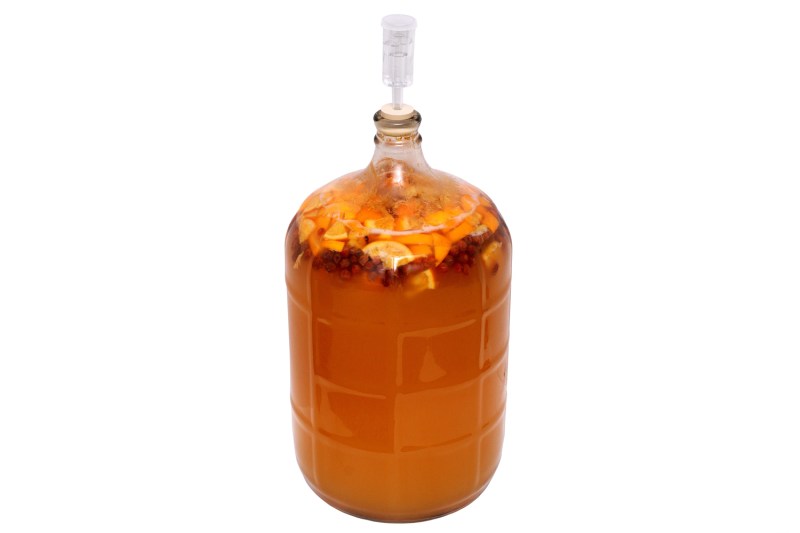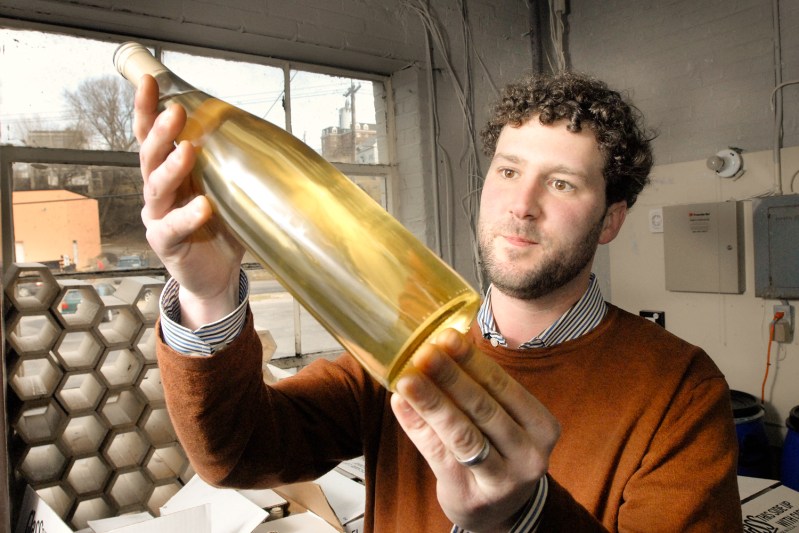Mead — essentially honey water that’s been fermented –is one of the first fermented beverages we have on record. It has persisted for millennia because of its versatility — it can be spiced, carbonated, fruited, or sweetened in near-countless combinations. It is that malleability that makes mead as rich a palate for experimentation as beer, wine, or any other alcoholic beverage.

Sadly, the range of meads available at bottle shops can be incredibly limited (though, thankfully that number is growing). But for the creative and inspired, mead making is a task you can easily master at home, with minimal equipment and ingredients required. Bonus: you can call yourself a mazer.
Meads are hearty drinks that can easily exceed 20% alcohol by volume, thanks to the base being honey. To reach that milestone, mead requires a long fermentation time and a lot of patience. If you want to taste the fruits of your labor sooner, “short meads” are the answer.
Short meads are intentionally produced with a low alcohol by volume ratio, often not more than 5 percent. That makes short meads comparable to session beers in the brewing world. Short meads require less time to ferment and can be enjoyed in larger quantities with less concern about imminent intoxication. Only have enough space on a countertop to fit a small fermentation vessel? Great, short mead it is!

To get started, you only need three ingredients: honey, water, and yeast. The only necessary equipment is a freshly sanitized 1-gallon vessel. To make the most basic mead, add one pound of honey and top off the jar with water. Pitch the yeast and mix well. After two weeks, the mead is ready for drinking.
How to Make Short Mead
Ingredients:
- 1 lb honey (try to avoid grocery store honey, as it is sometimes not actually honey)
- 1 yeast packet (while you can use an ale yeast, most mead makers use Lavin ICV D-47, a white wine yeast)
- Pure water (if you’re using tap water, it is good to know the mineral content, as that will affect the final product)
Equipment:
- 1-gallon fermentation vessel (something like this is perfect)
- Starsan
Method:
- Sanitize your vessel, following the Starsan instructions. (If you were to be using any tools — such as a funnel to get the ingredients into the vessel — you would want to sanitize them as well.)
- Add honey and water to your fermenter.
- Pitch the yeast according to instructions.
- Add yeast to the fermenter and mix well.
- Make sure there is water in the airlock so you can monitor the bubbles (the visual bi-product of fermentation) escaping.
- Wait approximately two weeks and your mead will be ready (the bubbles will have all but stopped). Depending on the type of yeast you use, it may take less or more time.

Short Mead Tips and Tricks
If you want to take your mead making to a more professional level, consider using a hydrometer to take gravity readings so you’ll know the mead’s ABV. Adding an airlock will allow carbon dioxide to escape while preventing oxygen and other elements from entering, improving the consistency of your mead.
Speed Brewing by Mary Izett is a great primer for short meads. A section of the book is dedicated solely to the history and processes of meads with a handful of excellent short mead recipes tossed in for good measure. Whether you want to make a bochet (mead with caramelized honey) or pyment (mead with grape juice), the basic building blocks of mead-making can be found in Izett’s helpful pages.
Another solid reference for experimentation is The Compleat Meadmaker by Ken Schramm, a book that countless mead makers got their start using.
While making a straight-forward traditional mead or following the recipes of others is a great launch point, short meads are ripe for experimentation. Try adding varying levels of honey for new experiences in sweetness and ABV. Add fresh or dried herbs, fruits or peppers. Throw in some hops. Or try different types of yeast for even more variety in dryness and flavor.
Article originally published November 6, 2018.


